
- Products
- Solutions
- Learn
- Partner
- Try Now
Customer retention is defined as a company’s ability to retain its customers over time. It’s a percentage-based metric that measures the number of customers that are retained by the end of a given period. It is the opposite of the customer churn rate, which defines the number of customers lost over a period of time.
Industry-wise retention rate:
You need to know exactly where you stand in a business at all times. Measure everything, because everything that is measured and watched improves. Compare your customer retention rate with your industry average and strive to improve it further to gain competitive advantage over others.
Why is customer retention important?
80% of the revenue comes from 20% of your customers. Popularly known as the 80:20 rule or Pareto principle, it is a fundamental phenomenon that applies to everything, e.g.
- Zipf’s Law (20% of the words make up 80% of the text in any writing material, may it be Shakespeare’s Hamlet or Darvin’s theory of Evolution.)
- 20% of products drive 80% of sales.
- 20% of the people own 80% of the wealth
This brings us back to the very first line: 20% of customers generate 80% of the revenue.
However, the numbers don’t have to be 80-20, and they don’t have to add up to 100. They can be 70-25 or 90-15, for example. The main idea is that not all causes are born equal and that there is an uneven distribution of how much of an effect each cause has.
- Almost 65% of a company’s business comes from repeat customers. (Source: SmallBizGenius)
- by studying the top 20% of your customers, you can work out how to attract similar people and increase your future profits. (Source: Investopedia)
- It costs up to 7x more to acquire a new customer than to retain an old one.
Constantly having to look for new customers will drain your business’s resources. Building a sustainable business model comes down to taking care of your biggest asset—your customers.
It’s essential to establish a healthy balance between both welcoming new customers and making your existing customer base feel special. It can be done by ensuring their needs and expectations are met. And a special emphasis has to be paid to increasing this group of your loyalists and making their experience an exceptional one.
Customer retention strategies
Now that we know what to do, the question is how. The ideal way to do this is to learn from the best. Listed below are examples of various retention strategies perfected by various brands.
Strategies for customer retention:
- Inspire with a mission
- Start a customer education program
- Use subscriptions
- Customer surveys
- Gamification
- Target abandoned carts
- Reward your loyal customers
- Apologize for your mistakes
- Deliver experiences
- Thank your customers
Inspire with a Mission
In his amazing book, Start with Why, Simon Sinek defines that the difference between a good and a great business is that a good business sells its products, while a great one sells the idea. And it is not the product or service that people get emotionally attached to or pay a premium for, it’s what the brand stands for.
No brand has awed people more than Apple.
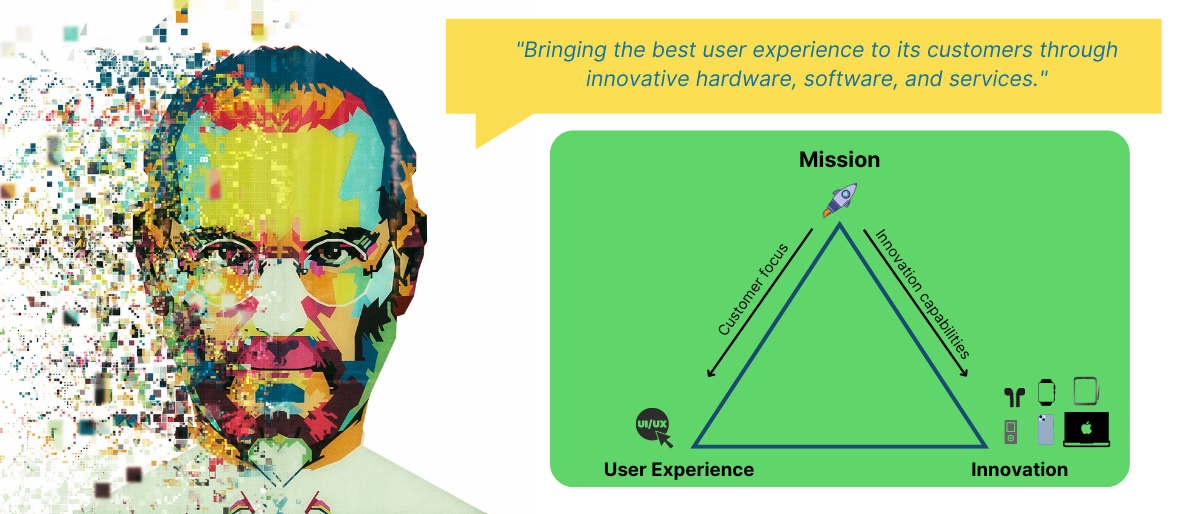
As Sinek puts it, “People don’t buy what you do. They buy why you do it.” Starting with “why” makes Apple more than just a computer company selling features, and that’s why their products have flourished while their competitors’ products with similar technology and capabilities have often flopped.
- Take a step back and use “why” to think about your own business.
- Incorporate “why” into your marketing copy.
- Redefine your buyer personas.
Start a Customer Education Program
“Education can be a silver bullet for retention. We need to teach users to recognize the value of our products or services—not expect that they already do,” says Greg Rose, Chief Experience Officer at Intellum.
Because if users don’t recognize value, they won’t buy.
A customer education program shows your commitment to your customers for the long run. More and more brands are educating their customers by introducing knowledge bases, discussion forums, and walkthrough videos. Some well-known brands also provide courses and certifications for learning about their products. SEMrush is a prime example of this. They not only offer courses for their offerings but also generic marketing content that helps customers outside their offerings.
Use Subscriptions
Customers re-purchase if they get special treatment over one-time buyers. A subscription-based model is a principal part of any service provider. The whole SaaS industry that provides subscriptions is over $208.1 billion in size.
But it’s unusual for a commodity-based organization to implement a subscription service into its business model. That was until Amazon launched Prime.
The subscription was created to offer customers faster delivery. It generated a lot of controversies but quickly became popular with regular shoppers on the platform. Now it has become the USP of Amazon where they provide three services with one subscription:
- Delivery
- Prime Video
- Prime Music
You don’t need to charge a fee for your subscription model to gain customer loyalty. Providing benefits in the form of exclusive content and events can help you leverage this approach without spending a ton.
If you’re going to take a page directly from Amazon’s playbook, then make sure you’re offering something people want. This goes back to customer development and understanding your audience’s desires and challenges.
Customer Surveys
Send your customers a quick online survey to gain a better insight into what’s working, and what isn’t. You’ll never please every customer on every issue, but surveys can help you identify patterns you’ve missed. A good survey should have a mixture of multiple-choice questions and free text answer fields to allow the customer to express their opinions more thoroughly where needed. Design a strategy for when you’re going to send out a survey—will it be every six months, or once a year?
Hyatt is among the biggest names in the hotel industry, it’s popular due to its willingness to listen to its customers.
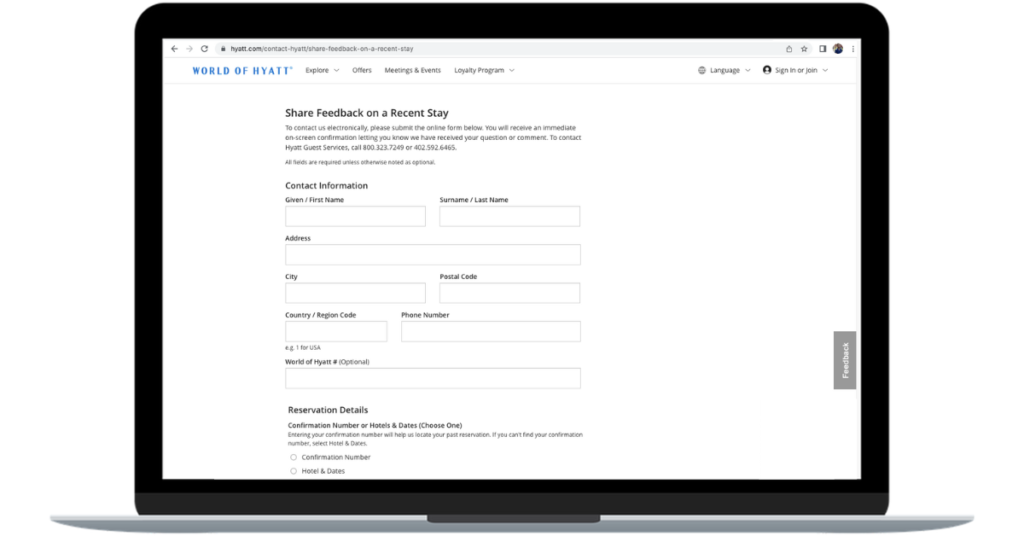
It focuses on collecting customer feedback through different channels and enhancing their experience in every possible way.
Hyatt has a dedicated landing page where customers can share their experiences about their recent stay and give feedback. It gives an excellent opportunity for customers to engage with the company. They also offer incentives to customers to take the survey.
They also offer incentives to customers to take the survey.
Use Gamification
Gamification is an extremely effective and enjoyable approach to thanking your committed customers for being loyal to you.
Customers may receive a discount for recommending friends, redeemable points for each transaction, or a badge as a token of a milestone.
Various kinds of gamification approaches include:
- Loyalty programs
- Referral contests
- Scavenger hunts
Google Pay has been one of the trendsetters in the gamification world, using various ways to gamify customer experience and increase customer retention.
The adoption of gamification is expected to grow by 25% every year!
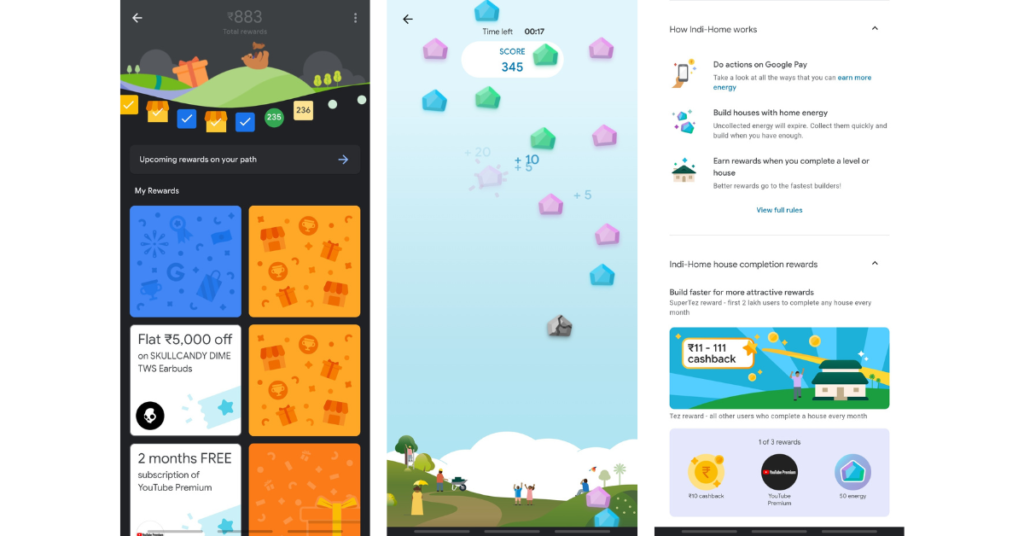
Target Abandoned Carts
Cart abandonment is a critical issue that all businesses face irrespective of their size or nature. Recovering them is a must. To know more about cart abandonment recovery, click here.
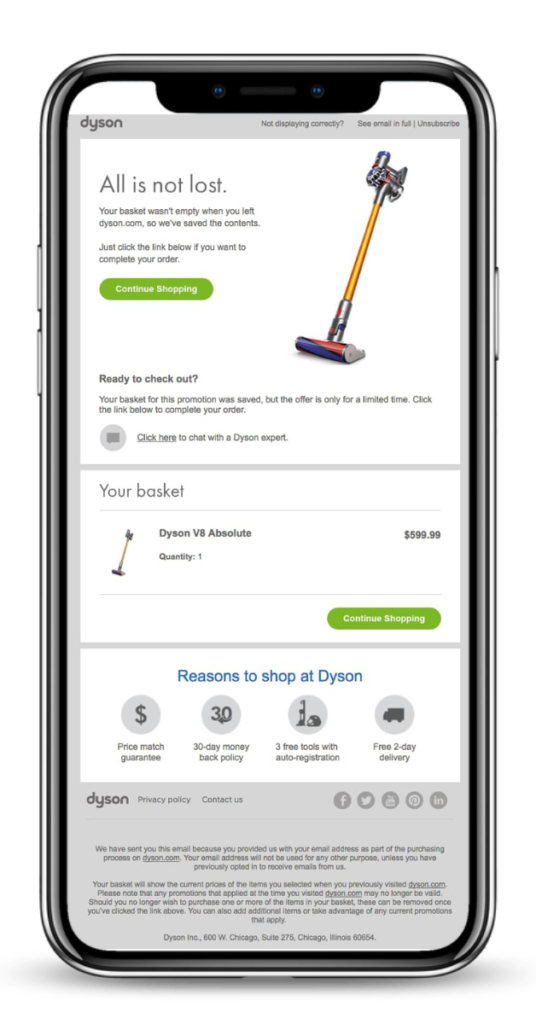
In this example, Dyson targets cart abandonment in its best form.
- Dyson employs text that is easy to read and helpful. They include phrases demonstrating Dyson’s desire to assist the customer like “All is not lost” and “We saved the contents”.
- They list the item that is still in the customer’s shopping cart and include an image of the product.
- A sense of urgency through the phrase, “Your basket for this promotion was saved, but the offer is only for a limited time” is created.
- There are two CTA buttons in them. Customers using mobile devices can now see a CTA button even as they scroll down. At every touchpoint, these buttons make it simple for them to finish their purchase.
Reward your loyal customers
Starbucks Rewards revamped the loyalty programs globally by focusing on cost reduction. It has become an inspirational customer retention strategy for many businesses. The coffee chain’s rewards program gives free food and drinks in exchange for stars or points, as well as offers perks like free refills. Its mobile app also includes limited-time bonus incentives to keep loyal customers engaged with the company.
Starbucks’ loyalty program continues to grow and build brand loyalty, with over 32,000 outlets globally. A high-quality mobile app experience that is intuitive and convenient is critical to the loyalty program’s success.
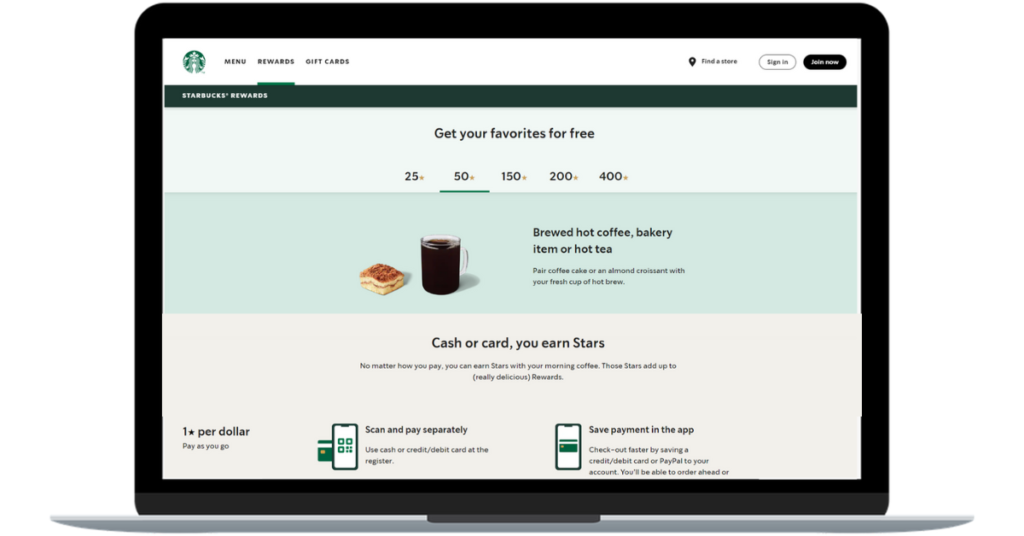
In addition to providing an excellent mobile experience, the points system gamifies the customer experience and encourages users to return to gain more stars. Starbucks Rewards is creating a better relationship with its existing customer base through discounts and convenience, which has dramatically enhanced customer retention.
Apologize for your mistakes
Mistakes happen in business, no matter how hard you try to avoid them. Whether it’s a data breach, an outage, a billing problem, or something else, a mistake might put you at risk of losing valuable consumers if you don’t address it properly.
When KFC ran short of its most critical ingredient, chicken, and had to temporarily close its 900 stores in the UK, enraged consumers went to social media. The fast-food chain used a full-page ad in British newspapers to apologize to its customers.
The bright red advertisement showed an empty bucket with the chain’s initials scrambled to say “FCK” on it, alongside an apology. “A chicken restaurant without any chicken. It’s not ideal. Huge apologies to our customers, especially those who traveled out of their way to find we were closed,” the ad said.
Thing to keep in mind while apologizing-
- Admit the mistake
- Briefly explain what happened
- Express regret
- Repair the wrongdoing
- Ask the customer for the feedback
- Follow up if necessary
You should make sure that you are never-
- Vague about what happened
- Make excuses and blame the customer
- Make the customer wait for the resolution
Deliver Experiences
Open Happiness. There is hardly anyone in the world who does not recognize the phrase.
Even though Coca-Cola produces beverages, they figured out a way to tap into the positive hype around an event by providing delightful customer experiences that reached beyond the point-of-sale.
Coca-cola has been delivering happiness for ages. They come up with new ideas now and then including the “Hug Me” campaign which offered a bottle of coke to anyone who hugs a vending machine.
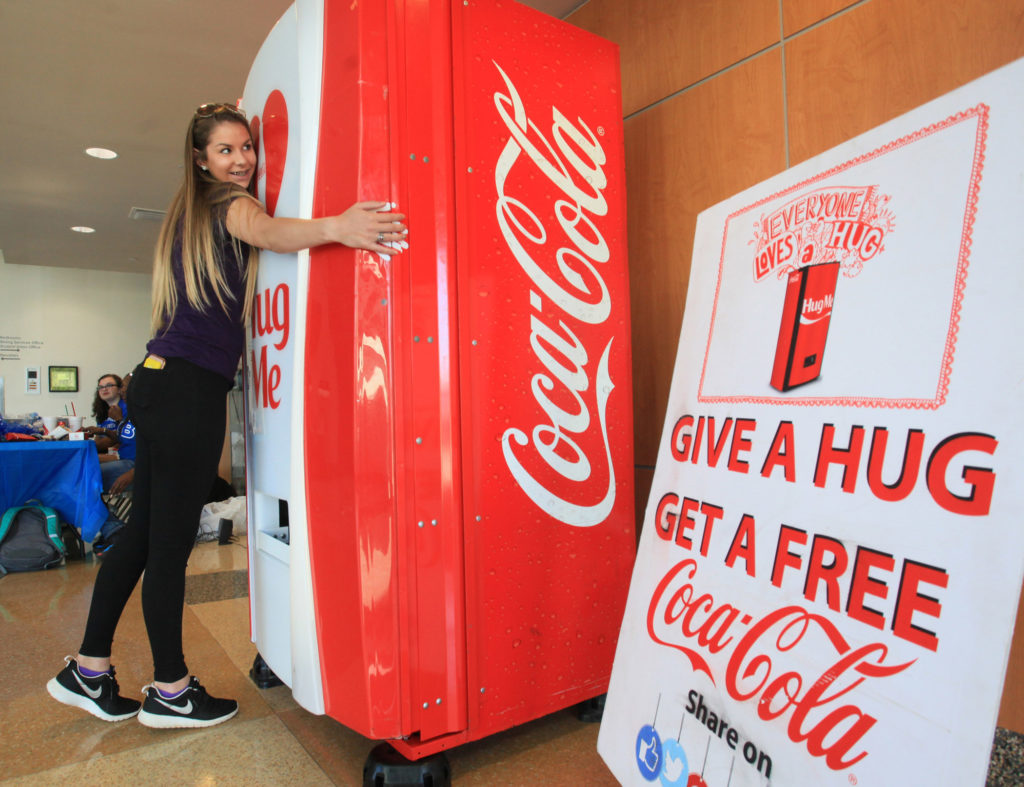
In a blind tasting test done, they offered Pepsi and coke in white cups across multiple malls. It was found that the majority of people prefer Pepsi. But, when brands were revealed, people opt for Coke. The reason was the brand association of Coke and what it represents.
Thank your customers
Thanking your customers is a must for every business. But taking an effort to thank your consumers, outside of an email campaign or a customer purchase goes a long way toward creating a and remembered brand.
Zappos is well-known for its excellent customer service, which includes efforts to show their customers how much they care by saying thank you and sending gifts.
Zappos keeps a track of how many presents and surprises were sent to customers in the preceding month to ensure that everyone on the team is doing their part to show consumers that they’re appreciated.
Thank you is a simple but powerful customer retention strategy that distinguishes anonymous websites from valued brands.
Conclusion
According to a KPMG study, it was found that customer retention was the most important revenue driver for businesses (KPMG’s 2014 Retail Industry Outlook). A high client retention rate can improve earnings by up to 95%. (Bain & Company).
Learn why customer retention is the ultimate growth strategy.
You can also sign up for Hippo and try one of the best marketing automation suite to improve your customer retention for free.
Subscribe to stay ahead with the latest updates and entrepreneurial insights!

Subscribe to our newsletter
Get access to the latest industry & product insights.





















